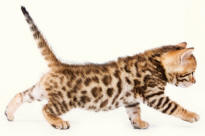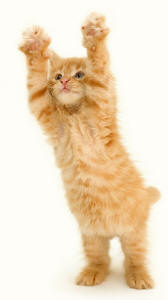Glossary
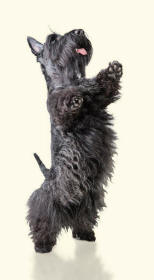
Gait
The pattern of movement of animals during (terrestrial) locomotion.
Gaits used by cats and dogs include the walk, the amble, the pace, the trot, the canter and the gallop.
Gaits used by cats and dogs include the walk, the amble, the pace, the trot, the canter and the gallop.
Fault
A characteristic of a pet that deviates from the breed standard.
Some breed standards specify characteristics that are undesirable, some of these being disqualifying faults.
Some breed standards specify characteristics that are undesirable, some of these being disqualifying faults.
Trot
A symmetrical, two-beat gait in which diagonally contralateral limbs move in unison.
This is an endurance gait, which allows coverage of ground at a reasonable speed but without expending maximum energy. The trot may, therefore, be maintained for hours.
This is an endurance gait, which allows coverage of ground at a reasonable speed but without expending maximum energy. The trot may, therefore, be maintained for hours.
Forefoot
The foot of a cranial (anterior) limb.
Central Line
An imaginary line along the direction of travel.
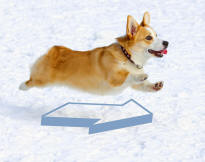

Angulation
The angles formed by bones meeting at a joint when the animal is standing at rest.
When the forequarter angulation matches the hindquarter angulation, the animal is said to be in balance.
When the forequarter angulation matches the hindquarter angulation, the animal is said to be in balance.
Hindquarters
The hind region of the dog, from the loin.
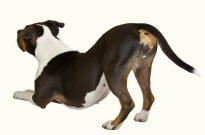

Stifle
The region or joint between the femur (upper thigh) bone and the tibia and fibula (lower thigh) bones.
Equivalent to the human knee.
Equivalent to the human knee.
Reach
The distance a limb can be extended.
